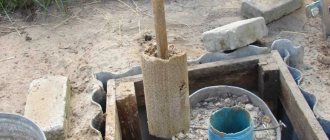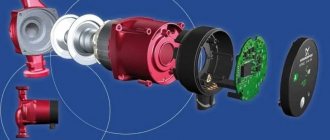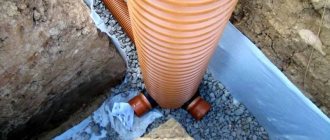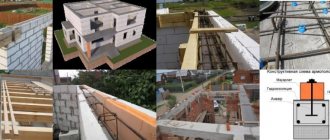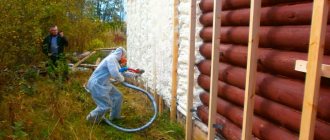Here you will learn:
- Eight ways to increase efficiency
- Integrated approach and technical solutions
Traditional potbelly stoves are not characterized by the highest efficiency. Up to 30-40% of the heat they generate flies into the chimney. Simple technical devices will allow you to increase the efficiency of a potbelly stove. In this review, we'll look at eight ways to increase the efficiency of these furnaces. They differ in level of complexity, but all work is done with your own hands using auxiliary tools. Let's go through these methods in more detail.
Principle of operation
People who have their own workshops, garages, houses, install potbelly stoves. This is a device that first appeared in the 1917 revolution. They named it because of the high consumption of fuel for the firebox, but the advantage is that the stove is unpretentious.
A potbelly stove made from disks has an advantageous design; it is simple and also has a low price.
The main disadvantages include low efficiency - only 15-20%. Insufficiently thick metal walls conduct heat poorly, and the device quickly cools down during processing. This happens because the main volume of heat produced by the stove evaporates into the chimney - that is, it heats the street.
Heat exchanger
To increase efficiency, you can try to increase the area of the heat-conducting surface. For this purpose, a heat exchanger is needed. It is mounted in a place where heat is concentrated to a greater extent, significantly increasing efficiency.
The heat exchanger for the building is a device for indirectly heating water. The essence of the operation is that the liquid circulates in a confined space due to the convention. Water warms up under the influence of heat.
Hot layers rise and are replaced by cooler ones. Mixing water against the background of heat is called circulation. Heated water or other coolant, rising, transfers heat to the water. The stove becomes a heat exchanger as it creates heat.
Working a potbelly stove in your home
The main functions of the device are:
- The heat exchanger becomes an additional heating circuit. As it runs, the fuel burns out and at the same time warms up the walls of the firebox. In this case, when interacting with air, hot bricks give off their heat, which evaporates through the flue.
- Thanks to the device, the air transfers excess heat to the liquid, thereby increasing efficiency, receiving an increased coefficient for each unit of fuel at the output.
- In accordance with its purpose, the device allows you to heat water for showers and heating fluids.
Safety rules and structural measurements
If you plan to install the stove outdoors, then installing a chimney will not cause much difficulty, the main thing is to choose a suitable location. It is important to remember that the stove structure should be located away from flammable objects and places of active recreation.
Constructing a chimney indoors will require knowledge of safety rules that will help avoid fire. The material from which the pipe is made must have increased heat resistance and can easily withstand temperatures above 1 thousand degrees. If you plan to install a potbelly stove near walls lined with clapboard or plastic, then the part of the wall located in close proximity to the stove is sheathed with fireproof material.
Don't forget to decide on the pipe size
The hole through which the chimney will enter the ceiling must also be decorated with non-combustible materials, since the entire structure becomes very hot when the stove is operating. For these purposes, a special glass is used to prevent contact of the hot pipe with the edges of the hole. If there is more than one potbelly stove installed in a building, then a separate smoke exhaust system is made for each of them.
After calculating the diameter of the pipe for the potbelly stove, you will need to calculate the total length of the pipeline, but first you need to accurately determine the location of the stove in the room. Then determine the specific location where the chimney will be vented outside. When measuring the length of the pipeline outdoors, you need to take into account that the height of the pipe above the ridge should be 1.3-1.7 meters.
It is more difficult to carry out installation work indoors
Types of devices
Among air types, the classic model for self-assembly is a tubular heat exchanger. But there are also a large number of other types. They remain relevant for chimneys of long-burning stoves, small-sized potbelly stoves, and stoves undergoing mining. Their heat converted from combustion energy is called dry heat. Pipes can be welded to the firebox horizontally and vertically. Vertical localization is many times more effective because the air flows better through the channels. The material is usually steel.
Another type of heat exchanger is a pipe that wraps around the firebox. For proper heat transfer, 2-3 curls are required. They move apart a little, increasing the heating area. The performance corresponds to the difference in the level of inlet and air supply. The draft corresponds to the temperature difference, so the hole for the fence is often exposed to the street.
Coil
Partitions in the housing are also a type of heat exchanger. The characteristic labyrinth is constructed from vertical metal plates. The optimal thickness of each part is 6-8 mm. The inlet and outlet openings of the air duct are formed opposite each other, and a cover is welded on top to seal the housing.
Partitions in the housing
The next option is pipes that pass through the firebox. The structure is constructed already at the stage of assembling a home-made device, before welding the walls. The channels are located parallel at the same distance. The cross-section of the pipes is not less than 50 mm.
Pipes through the firebox
In vertical channels, air moves more actively, therefore increasing productivity. Less commonly, horizontal channels or partitions are appropriate. Any described scheme is suitable for design, provided you have welding skills.
Why increase efficiency?
The compact dimensions of the stove mean that the surface that heats up during operation is small. Not much heat flows outside and the room quickly cools down. Sometimes it seems that the return from the potbelly stove is weak.
To help it increase efficiency, several tasks are solved:
- the duration of combustion and smoldering increases;
- a sufficiently high combustion temperature is ensured;
- a high level of traction is achieved.
Standard potbelly stove efficiency
Which material to choose
Using classical technology, the coil is constructed from a pipe. Its length and diameter are set depending on the required heat transfer. The exact operating efficiency depends on the thermal conductivity of the materials. Usually pipes are taken from:
Steel
- copper – thermal conductivity coefficient 380;
- steel – 50;
- metal-plastic – 0.3.
Do-it-yourself copper heat exchanger for a potbelly stove
With the same heat transfer rates and the same transverse size of pipes, the length of metal-plastic pipes is 11 times longer, and that of steel is seven times longer than copper. For this reason, annealed copper pipes are chosen for the coil. They are plastic, so they easily take the required shape with the help of deflection. It is also easy to connect a fitting to such a pipe using a thread.
Calculation of a chimney for a potbelly stove
After the stove is installed and ready for use, it is necessary to install a chimney that can function properly, retain heat in the room and at the same time prevent combustion waste from entering the air of the room where the stove is installed. To do this, you need to correctly calculate the diameter of the pipe, its length and think about how it will exhaust the smoke into fresh air.
Once the diameter of the chimney pipe has been determined, the length of the entire pipeline should be calculated. In these calculations, it is important to take into account not only the location of the potbelly stove, but also how far from the ridge the chimney is located on the roof.
We suggest you read: How to make a groove in a board with your own hands
The pipe outlet above the roof should be located according to certain rules:
- The chimney is located from the roof ridge at a distance of up to 1500 millimeters, which means the pipe outlet should be located at a height of 50 centimeters above the top of the ridge,
- With a distance to the canopy of 150-300 centimeters, the pipeline outlet can be positioned at the same level with it,
- If the chimney is located near the edge of the roof, then its outlet should be slightly lower than the ridge, or at the same level with it,
The second option for the pipe to exit is through the wall, and not through the roof. In this case, the end of the chimney should be located just below the top of the roof ridge.
But the main long pipe will be the total distance from the pipe outlet to the potbelly stove itself - the calculations in each individual case will be different, it all depends on what floor, in what place in the room and at what height the potbelly stove will be located.
Options for making devices yourself
When selecting, the main role is played by the price of the heat exchanger. The design will depend on the material. Another important nuance is manufacturing capabilities.
You also need to understand where the stove will be placed. It is important to take into account the purpose of operation - heating and cooking, for heating a bathhouse, a house. Each type has differences.
For heating a private home
The main thing is to correctly calculate the area that needs to be heated, also clarify whether hot water is required, and calculate how many units of fuel will be consumed per season. The results of the calculations are the selection of the most suitable and affordable materials for the budget.
For a bathhouse you will need a comprehensive option. The main goal is to warm up the water, two rooms at once - a dressing room with a steam room, and sometimes a shower. It is recommended to use a heating coil for stove heating and water heating. Additional heating will improve the quality of the steam.
For the bath
For the home, the functional requirements for the device must be taken into account. The final choice will depend on this. Usually in villages they try to make universal heating and cooking structures; they install the most commonly used heat exchangers, simple ones that solve at least three problems - heating, cooking, water heating.
For garage
The garage is the easiest place to choose, here heating the liquid carrier is an optional function, the main thing is heating the room. These conditions will make the choice easier. Various homemade heat exchangers made from scrap materials are suitable - car radiators, cast iron batteries, etc.
Furnace characteristics
Each device has its pros and cons during use. In the case of a potbelly stove, we highlight the following positive aspects:
- The design of the furnace is simple and does not require large financial expenditures. Everything you need to make a stove with your own hands can be easily found in the utility room.
- If necessary, the potbelly stove can be easily transported to another house or garage. Its weight usually does not exceed 30 kilograms and its small dimensions will only be a plus.
- The stove can be quickly heated regardless of weather conditions.
- In fact, almost anyone can heat a potbelly stove. That is, it can be coals, sawdust, firewood branches, or even household garbage.
As for the negative characteristics, we highlight the main ones:
- The heated surface area is quite small, and therefore a small amount of heat enters the room.
- The room, even after using the stove for a long time, cools down quickly.
Taking into account such shortcomings, we are talking about a low efficiency, that is, the level of efficiency of the stove.
We recommend: DIY bubbler
Heat exchanger from a cylinder
To use already exhaust gases for additional coolant in the heat exchanger, you need to slow down the exit of smoke by creating a barrier in the chimney. For construction you will need three empty gas cylinders, sheet metal and scrap metal. The sequence is:
- Build a firebox from a cylinder - cut out the top so that the diameter of the hatch reaches 200-250 mm.
- Mark a rectangle measuring 50 by 20 cm on the wall, apply a mesh with cells 30 by 40 mm. Make holes in the crosshairs.
From a cylinder
- Build an ash pan slightly larger than the area with the holes. It must have a lid. This is a collection for ash. Supports are welded to the wall at the corners.
- At a distance of 4 cm from the bottom of the cylinder, at the rear wall of the firebox, a hole is first marked, then a hole 3 cm smaller than the cylinder itself is cut.
- It is better to make the door for the firebox from the head of the second cylinder, cutting a hole in the center of it. A piece of pipe with a diameter of 7.6 cm, equipped with an adjustable damper, is attached to the hole. The mobility of the sash is supported by hinges and locks of inventory drawers.
Balloon frame design
- Construction of a heat exchanger from the second cylinder. Make 3 bulkheads from 4-5 mm metal so that they cover the internal size of the cylinder. They cannot fit around the edges of the hole according to the diameter of the chimney pipe and for a margin of another 2 cm.
- Cut off the bottom of the cylinder, cut it in the shape of a fit on the firebox at an angle of 90 degrees.
- Cutting a hole for the chimney in the valve part.
- Installation of the bulkhead - holes in a checkerboard pattern.
- Installation of the heat exchanger, scalding, welding of the pipe.
Chimney maintenance
Despite the apparent simplicity and unpretentiousness of the design, the chimney for a potbelly stove will need periodic attention. First of all, this will have to be manifested in regular inspection of the pipes for the appearance of rust, signs of burnout or cracks.
The presence of any of these defects should be a signal to immediately replace the damaged section of the chimney. Left unattended, it will sooner or later turn into a source of danger for the residents of the house. In the best case, smoke will leak through the cracks; in the worst case, a burnt-out pipeline may simply collapse.
It is equally important to take care of the internal surface of the chimney, on which soot and ash will invariably accumulate during operation. The presence of a thick layer of soot can have several negative consequences:
- Craving decreases.
- Normal smoke removal is impaired.
- The chimney structure becomes heavier.
Accumulated soot can be removed using special chemical compounds that are applied to the firewood. Their components are completely harmless to human health, but for soot they are a truly formidable weapon.
Ordinary aspen firewood has almost the same effect. It is desirable that the aspen smolder little by little and not burn out quickly.
In structures equipped with additional elements, it will be enough to just cover the vent.
But traditional cleaning methods (metal brush, core, brush, high temperatures) will not work here, since thin iron may simply not withstand it.
In order for the potbelly stove to always have good draft and to avoid smoke in the room, it is necessary to carry out preventive measures that will help keep the chimney in order.
Any chimney requires periodic preventative maintenance:
- In order to keep the pipe clean from soot deposits, it is necessary to periodically add chemicals specifically designed to loosen carbon deposits to the wood being burned. Aspen firewood is also used for the same purposes, which helps clean the internal walls. To clean the pipe with their help, only aspen firewood is used for preventive combustion. It is advisable that they do not burn out quickly, but smolder for as long as possible in the firebox. To create such conditions, the draft is artificially reduced by closing the ash pit after the wood has burned well.
- The pipes are mechanically cleaned annually to remove carbon deposits and rust. To do this, you can use a special cleaning brush with a weight.
- After each cleaning, be sure to inspect the surface, carefully lowering the switched-on light bulb into the chimney. This is necessary in order to detect burnouts or cracks in time.
The process of installing a chimney from ready-made segments is quite simple, and you can easily handle it yourself. If you want to make parts of the pipe yourself, then it is better to abandon this immediately, especially if you have no experience in such work.
Since any chimney must be extremely reliable, and all segments must perfectly match each other when joined to seal them, it is recommended to install parts manufactured exclusively at a professional level. It must be remembered that the entry of carbon monoxide into a room from poorly sealed seams or burnt holes is, without exaggeration, a mortal danger.
We invite you to read: What are the disadvantages and advantages of a bathhouse made of expanded clay blocks?
Economizer Fehringer
The device is used to improve efficiency. It works by extracting heat from the chimney. It has 4 pipes, 60 mm each, with spiral-shaped swirlers.
The passing gases from the smoke swirl, resulting in maximum heat release. The device is made of black steel. It is designed for the entire period of operation of the stove. It allows you to quickly warm up the steam room.
Feringer is valued by bath lovers as one of the best models. They are produced in different versions, but in two main categories:
- Steam - the heater is closed, creating a steam room atmosphere - temperature up to 50-70 degrees, humidity reaches 40-75%.
With closed heater
- Golden ratio - the heater is open, suitable for saunas, where at a temperature of 80 degrees, low humidity is needed - 10-15%.
With an open heater
Since 2011, the company has developed a new line - Lamel. It has a natural stone cladding and small innovations in the design that allow you to confidently heat log steam rooms.
Lamella
The system for securing the decorative stone of the stoves is unique - a holder is installed on the cut plates of the stone. Its hooks are fixed in a groove. The design is simple, at the same time very effective, installation work is simple, it will take no more than 1 hour.
Air convector
There is not always enough finance to purchase a ready-made heat exchanger. In principle, it is not difficult to make a heat exchanger for a heating furnace. For this, copper and aluminum are used; if desired, you can completely do without welding. With proper preparation and accurate calculations, the budget is significantly saved.
First, a location is selected, parameters are calculated, and you need to decide what material to choose to make the heat exchanger. You can build a structure from an old cast iron radiator, a radiator from a car. The main thing is to take into account the conductivity of heat. It is also important to think over a set of tools, prepare everything in advance, each detail makes installation much easier.
Assembly must begin with drawing up a drawing taking into account the dimensions. If the stove is weak, a disproportionately large heat exchanger will do harm. When using copper for the coil, its length is maximum 3 m. The speed of heating depends on the length of the pipe and the number of curls. It is important to remember that distortions reduce the life of the equipment.
Air convector equipment
To twist the pipes into a spiral, a template is required. This is any available part in the shape of a cylinder. Its diameter must fit into the size of the firebox.
The sequence of actions is as follows:
- bend the pipe, wind it around the workpiece to form a spiral;
- keep the dimensions to fit the coil;
- the average design power of the heat exchanger is 1 kW per 10 m2.
Increasing heat capacity
The heat capacity of a potbelly stove can be increased both by increasing its weight and dimensions and by using additional heated materials. In any case, it is necessary to make design changes to the heating system. One option may be to use smoke circulation inside the oven. This can be done by installing sheets of heat-resistant metal in the firebox, thereby providing additional paths for the movement of gases. At the same time, they are burned, heating the furnace to a higher temperature. But at the same time, the temperature of the exiting smoke also increases. With a short chimney, the heat is simply released into the atmosphere.
To use this heat, a heat-storing container is installed on the exhaust pipe of the potbelly stove, which can be made either from an old gas cylinder or from a large-diameter pipe. The container is filled with large stones that retain heat well. At the same time, it is loaded to approximately 2/3 of the volume. The stones are placed on the grate. Hot gases flowing through the battery heat them up and, giving off heat, go outside.
The stones are heated to a temperature of about 400 °C. After the fuel burns out in the stove, the damper on the chimney is closed and the room is heated using the heat accumulated by the stones. In this case, the stove is in a cold state. Using such a battery allows you not only to save fuel, but also to receive heat after the stove stops working.
The battery, which increases the efficiency of the furnace, can be made of brick and installed on metal supports above its surface. But such a design cannot be used with a round stove.
The calorie content of fuel depends on its type and quality. Replacing fuel with a higher-calorie fuel is expensive and requires additional storage space. As a rule, garages are heated with waste material that is easy to find. Now, knowing how to increase the efficiency of a potbelly stove, you can begin work. It should be noted that the best results are obtained with the integrated use of methods that increase the heating efficiency of the furnace.
Installation
It is most convenient to install the heat exchanger at the masonry stage. This helps to build it more correctly with strict adherence to dimensions and gaps. This makes it much easier to fit the given dimensions. After installing the heat exchanger on the stove foundation, it is covered with bricks. This is easier than disassembling the existing structure, although this approach is not excluded.
To increase operating time, you need to pay attention to the following nuances:
- do not fix pipes with metal fasteners;
- do not fill the system with too cold water, otherwise strong condensation will form;
- observe the ratio of the sizes of the furnace and heat exchanger, the difference should not be large;
- use seals with good fire resistance;
- compliance with fire safety measures.
These simple settings will help prevent the occurrence of situations dangerous to the life and health of people, increase service time, and remember safety.
How to maintain a constant temperature?
When wood or coal burns out, the heat transfer rates of the stove are significantly reduced, and after a while the structure completely cools down. To reduce fuel consumption and maintain the set temperature, experienced stove makers advise using the following methods:
- place side metal screens next to the potbelly stove (no closer than 5-6 cm) to additionally heat the room due to the circulation of warm air,
Protective screens
- The heat can be retained much longer by the structures in the metal casing,
- To reduce air circulation, it is important to place logs in the oven as tightly as possible. If coal is used as fuel, the ash should be stirred up as little as possible,
- by placing a metal box or bucket of sand on top, even after extinction the accumulated heat will be evenly distributed throughout the room,
Pour sand into a bucket or box and place it on top of the stove
- To preserve heat, you can line the potbelly stove with bricks (in 1-2 layers), but not tightly, but at a distance of 5-7 cm, leaving gaps for ventilation.
